The NVIDIA GeForce RTX 2060 6GB Founders Edition Review: Not Quite Mainstream
by Nate Oh on January 7, 2019 9:00 AM ESTCompute & Synthetics
Shifting gears, we'll look at the compute and synthetic aspects of the RTX 2060 (6GB). As a cut-down configuration of the TU106 GPU found in the RTX 2070, we should expect a similar progression in results.
Starting off with GEMM tests, the RTX 2070's tensor cores are pulled into action with half-precision matrix multiplication, though using binaries originally compiled for Volta. Because Turing is backwards compatible and in the same compute capability family as Volta (sm_75 compared to Volta's sm_70), the benchmark continues to work out-of-the-box, though without any particular Turing optimizations.
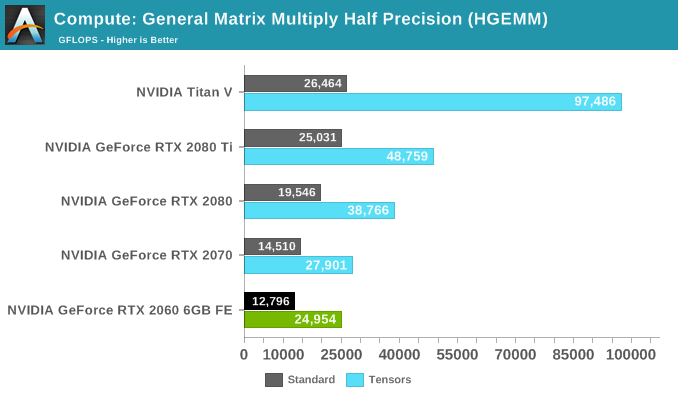
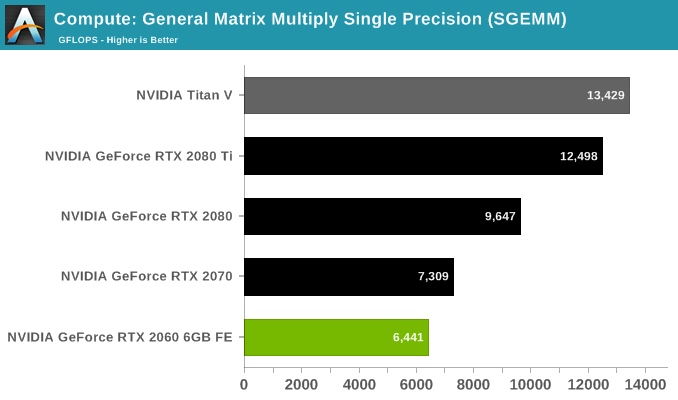
For Turing-based GeForce, FP32 accumulation on tensors is capped at half-speed, thus resulting in the observed halved performance. Aside from product segmentation, that higher-precision mode is primarily for deep learning training purposes, something that GeForce cards wouldn't be doing in games or consumer tasks.
Moving on, we have CompuBench 2.0, the latest iteration of Kishonti's GPU compute benchmark suite offers a wide array of different practical compute workloads, and we’ve decided to focus on level set segmentation, optical flow modeling, and N-Body physics simulations.
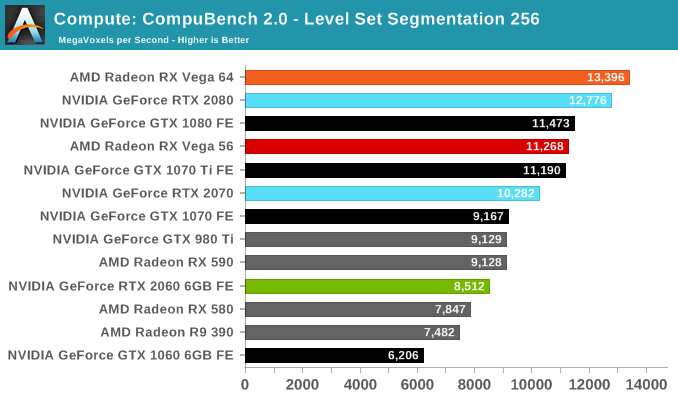
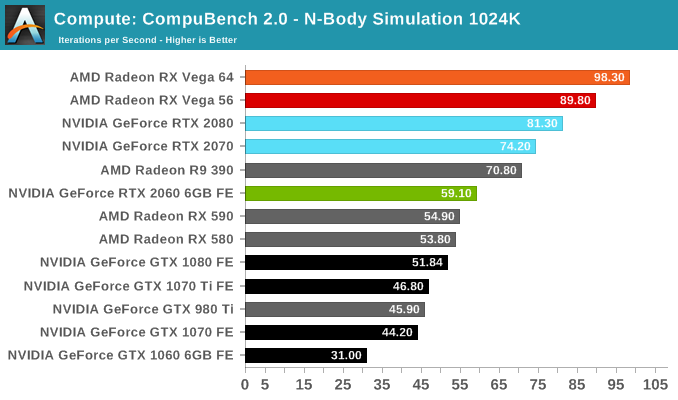
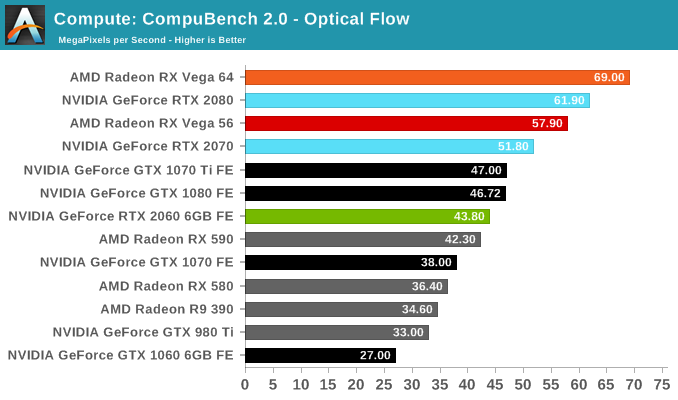
Moving on, we'll also look at single precision floating point performance with FAHBench, the official Folding @ Home benchmark. Folding @ Home is the popular Stanford-backed research and distributed computing initiative that has work distributed to millions of volunteer computers over the internet, each of which is responsible for a tiny slice of a protein folding simulation. FAHBench can test both single precision and double precision floating point performance, with single precision being the most useful metric for most consumer cards due to their low double precision performance.
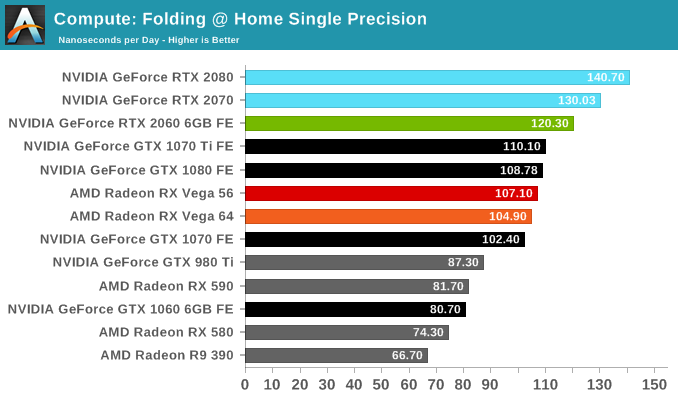
Next is Geekbench 4's GPU compute suite. A multi-faceted test suite, Geekbench 4 runs seven different GPU sub-tests, ranging from face detection to FFTs, and then averages out their scores via their geometric mean. As a result Geekbench 4 isn't testing any one workload, but rather is an average of many different basic workloads.
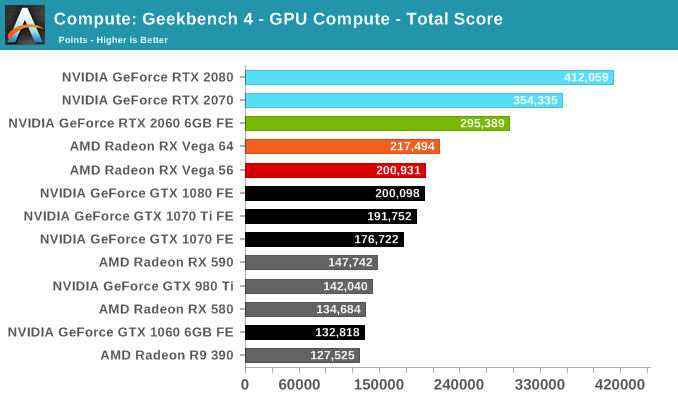
We'll also take a quick look at tessellation performance.
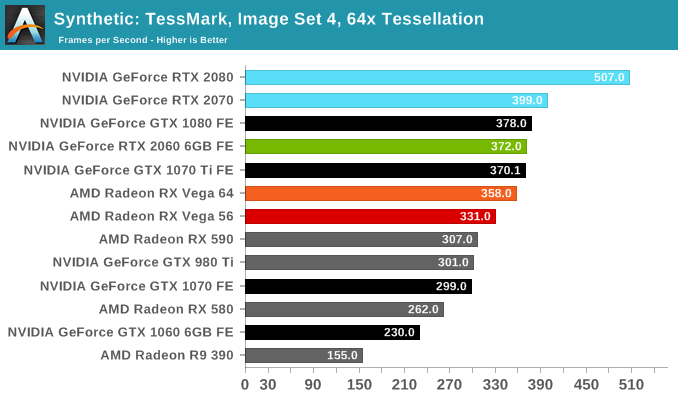
Finally, for looking at texel and pixel fillrate, we have the Beyond3D Test Suite. This test offers a slew of additional tests – many of which use behind the scenes or in our earlier architectural analysis – but for now we’ll stick to simple pixel and texel fillrates.
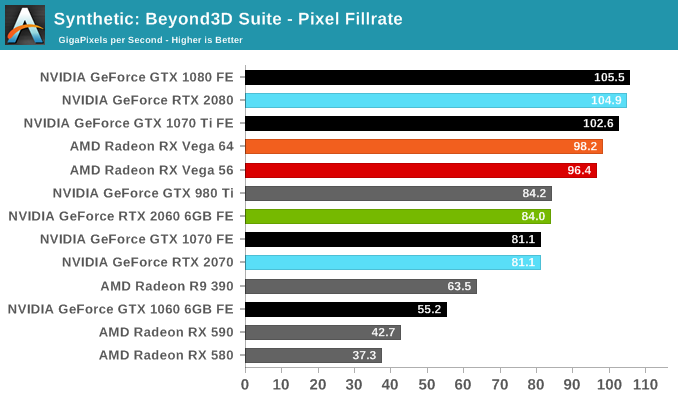
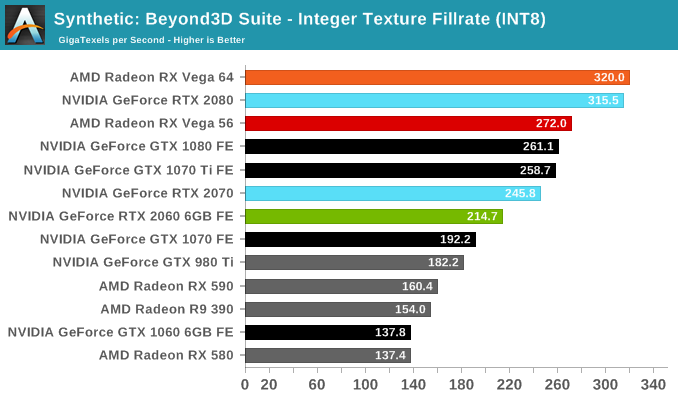










134 Comments
View All Comments
dave_the_nerd - Monday, January 7, 2019 - link
Selfish opinion: but I really would have appreciated a 970 in the graph, in addition to the 1060. (Only two generations old, same market segment and similar price point.)CiccioB - Monday, January 7, 2019 - link
Yes, also the 1080Ti is missing, and it is quite a pity, especially for the compute tests.Icehawk - Tuesday, January 8, 2019 - link
I wish they would show the 970 in tests too - partially because it was a popular card and most folks wait a couple of cycles to update and partially because that is what I have :) I would like to upgrade as it struggles at 4k and even 1440 on some of the latest games but I can’t stomach $500+poohbear - Monday, January 7, 2019 - link
Uhm, you didn't test for its RTX performance? Wasn't that the main contention with a GTX 2060????boozed - Monday, January 7, 2019 - link
Still waiting for real-world tests?saiga6360 - Tuesday, January 8, 2019 - link
Battlefield V? Crappy game but it does have ray tracing implemented.RamIt - Monday, January 7, 2019 - link
This card is worth no more than $199 us dollars. Sorry Nvidia your pricing stricture keeps me from buying your products from now on.RamIt - Monday, January 7, 2019 - link
Sorry for the typos. A little bit hammered at the moment but certainly mean what I implied.mkaibear - Tuesday, January 8, 2019 - link
Don't you buy on price/performance then? That seems odd.For the price this offers great performance.
sing_electric - Tuesday, January 8, 2019 - link
There's a lot of good value at ~$200 (RX 580, 1060 6GB since prices are being dragged down by the 2060), and then essentially nothing worth buying until the 2060 at $350, and then nothing until the 2070. (You could make a case for a Vega 64 on sale for $350, but even then, it's more power-hungry, etc.).So if GPU performance is important, and your budget can accommodate a $250-400 GPU, the 2060 is the one to buy. People can complain about $350 being a "high end" price, but the fact is, it's WAY faster than what you get for spending say, $280 on an RX 590.